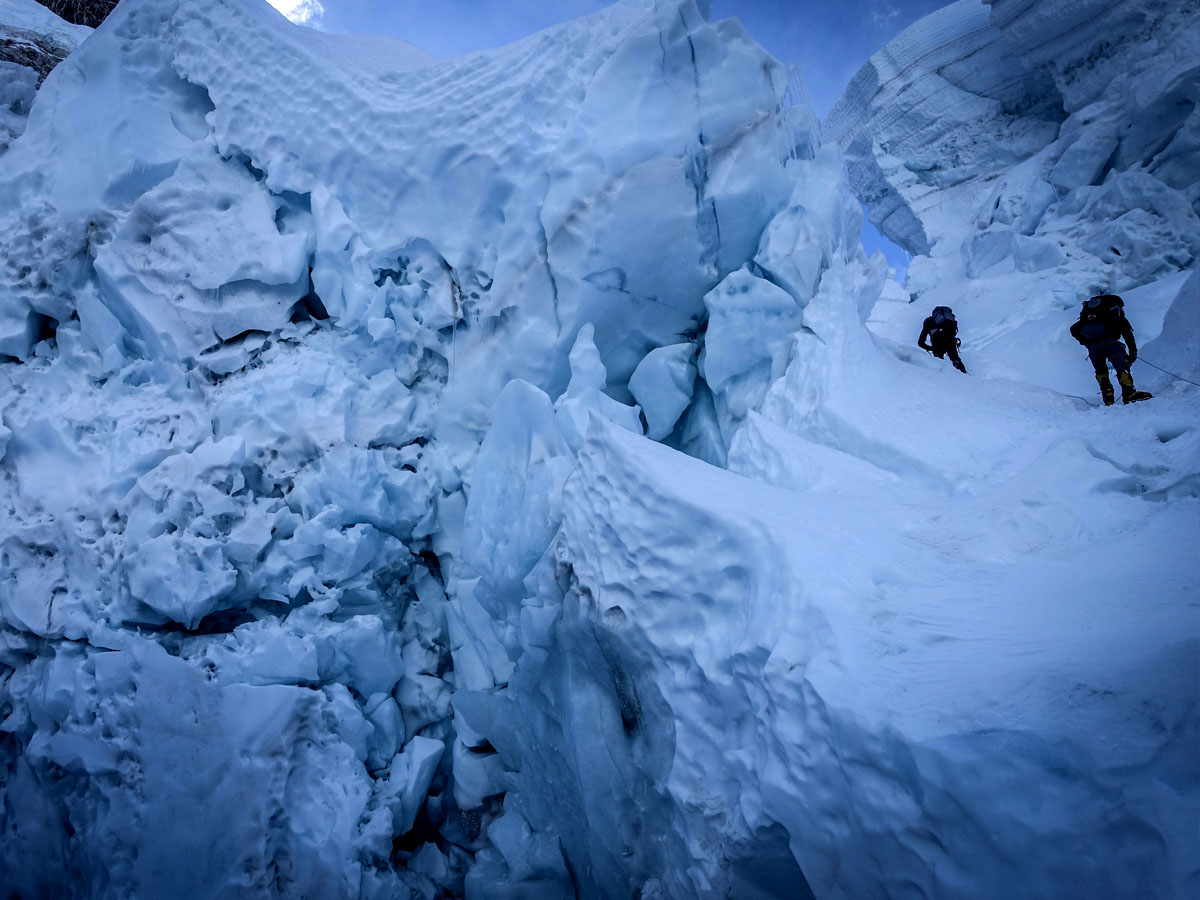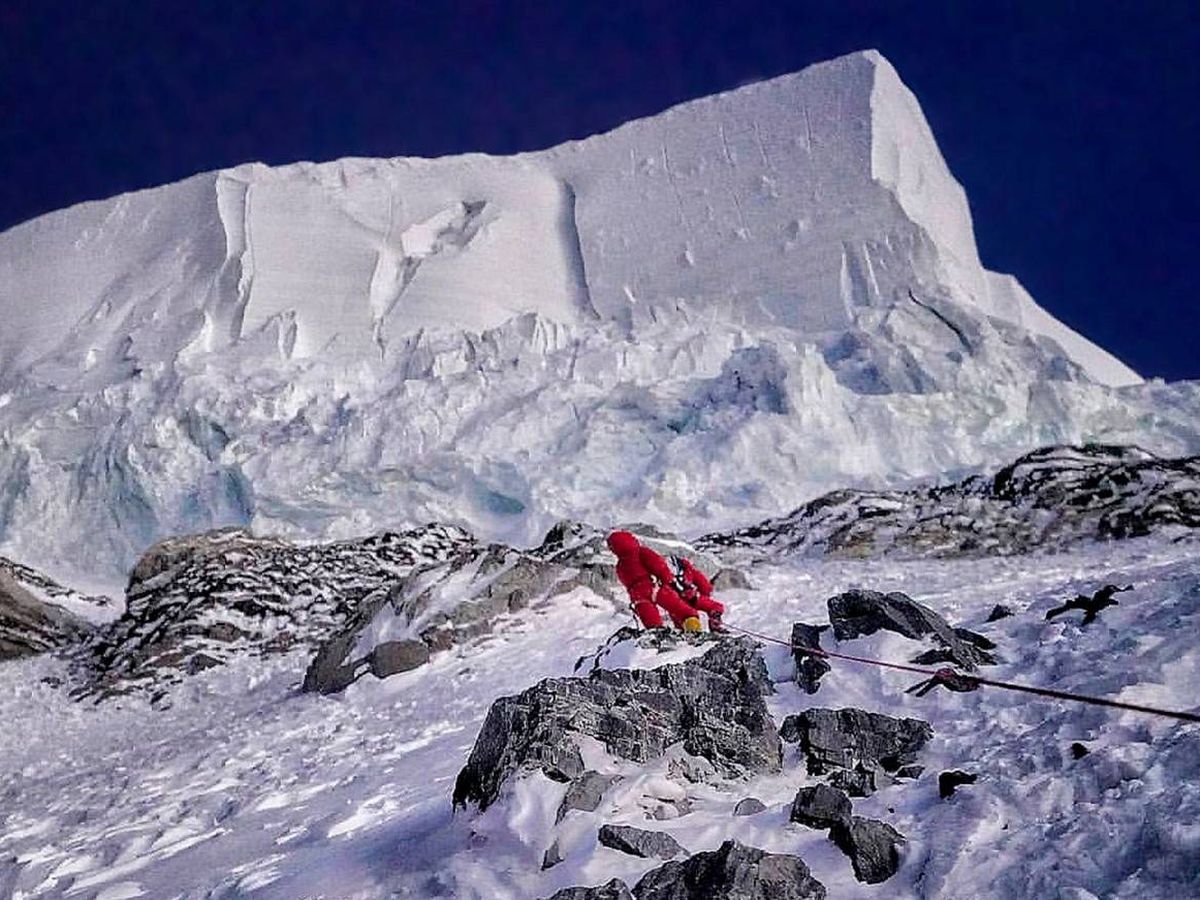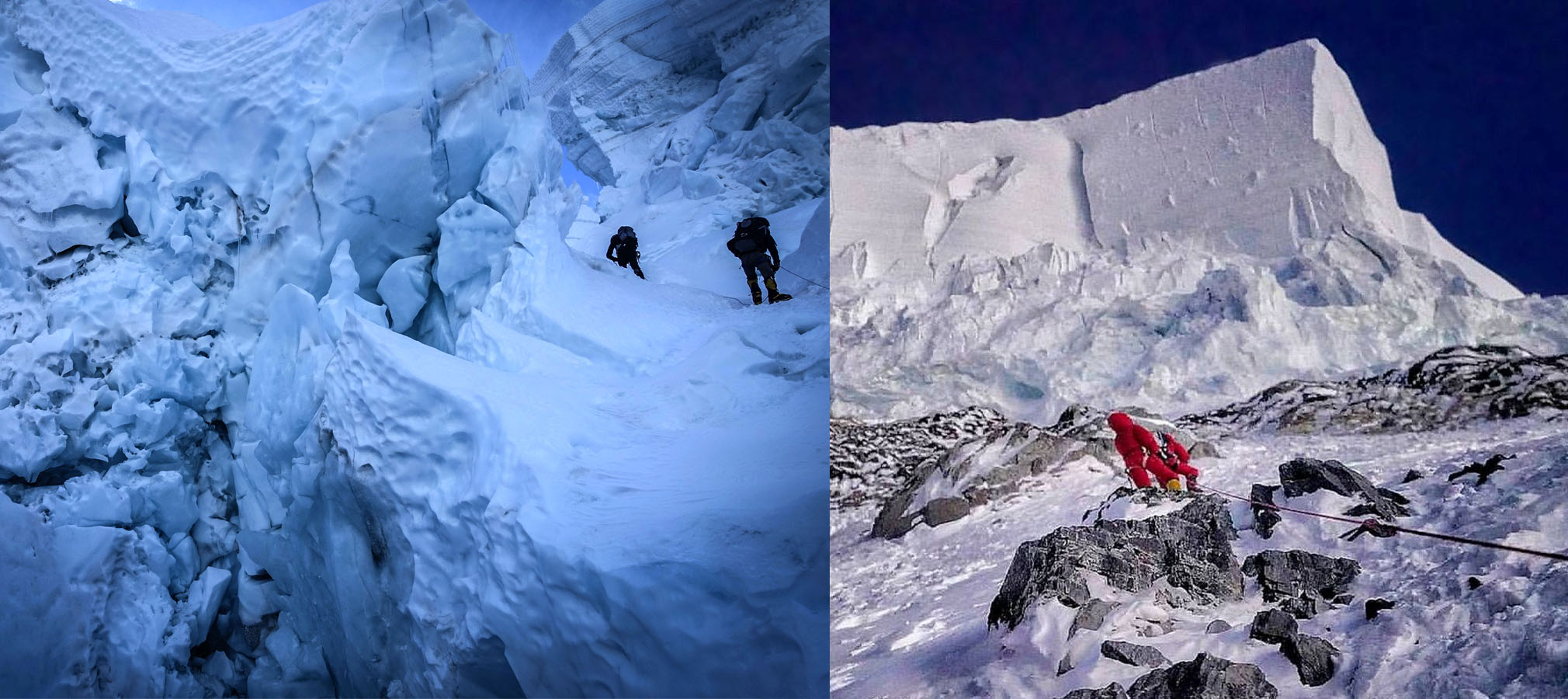Comparing Everest’s Khumbu Icefall and K2’s Bottleneck
Climbing Mount Everest or K2 is at the top of the bucket lists of countless mountaineers. However, making it to the summit of the world’s two highest peaks is easier said than done.
Both expeditions require between seven and eight weeks to complete and cost an average of $45,000 (K2) to $60,000 (Everest).
The investment in terms of time and money is significant for both peaks, making it of the utmost importance to complete the necessary training and pack all of the essential gear before flying into Kathmandu or Islamabad.
While gear lists and physical training are similar for climbing both peaks, K2 is widely considered a more technically challenging and dangerous mountain to climb than Everest.
Keep reading: How Much Does It Cost to Climb Mt Everest in 2022?
However, climbing both peaks entails a certain level of danger – as almost all expeditions into the mountains do. Where these mountains are at their most perilous is the Khumbu Icefall on Everest and the Bottleneck on K2.
Both features present plenty of danger for climbers trying to traverse them, but there is disagreement about which one is more dangerous.
Some consider the Khumbu Icefall more treacherous than K2’s Bottleneck due to its length and uncertainty.
However, Lukas Furtenbach, the owner of Furtenbach Adventures, has climbed and guided expeditions on both mountains. He told ExpedReview that he thinks the Bottleneck is the more dangerous feature.
What is the Khumbu Icefall?

The Khumbu Icefall is located at the head of the Khumbu Glacier and the foot of the Western Cwm at 5,486 meters (17,999 feet).
From Everest Base Camp, the Khumbu Glacier rapidly recedes, leaving a 4-kilometre (2.5-mile) long icefall in its wake.
Most guides consider the Khumbu Icefall the most dangerous portion on the South Col Route. The reason is the slow but steady movement of the icefall down the mountain.
The Khumbu Icefall moves an estimated 0.9 metres to 1.2 metres (3 to 4 feet) down the mountain each day, which opens crevasses with little warning and causes seracs – massive ice towers – to fall. These seracs range from the size of a refrigerator to a house.
“The Khumbu Icefall is at a low elevation, you can climb fast and without oxygen,” Furtenbach said. “Only some sections of the Khumbu Icefall are exposed to the risk of avalanches or collapsing seracs. You can identify these sections and move through quickly, and rest in safe spots.”
Keep reading: Lukas Furtenbach Discusses Flash Climbing
However, he said gravity makes the Khumbu Icefall the most dangerous part of any Everest expedition.
“It’s the movement of the glacier mass that causes collapsing seracs,” he said. “This can happen any day or at night time, no matter what temperatures or weather you have.”
“In addition, there is a potential risk from collapsing seracs and snow avalanches from both Everest’s west shoulder and Nuptse that can often reach the climbing route in the Khumbu Icefall,” he added.
.jpg)
Most climbers cross the icefall before sunrise while the ice is still partially frozen from the frigid nighttime temperatures and flowing more slowly.
Strong climbers can generally pass through the Khumbu Icefall in a few hours, limiting their exposure to its dangers. However, less experienced climbers have been known to take 10 to 12 hours.
Keep reading: Climbing The Seven Summits – Facts & Information
As the day progresses, sunlight warms the ice. Warming temperatures decrease the amount of friction within the glacier and speed up the movement of the icefall.
“When you climb in the dark and cold temperatures (no sunshine), you can at least reduce the risk of temperature-triggered events,” Furtenbach said. “But you still have the risk of gravity-triggered events.”
The structure of the glacier also continuously changes since the ice moves. This means that the location and size of crevasses also change. While many are easily seen, and avoidable, new or expanded crevasses may be hidden under snow bridges, through which climbers may fall.
Even with the extensive systems of ropes and ladders installed each climbing season by the ice doctors, the Khumbu Icefall is the most dangerous part of an Everest expedition.
“The key for the Khumbu is being fast and resting in safe spots only,” Furtenbach said.
What is the K2 Bottleneck?

The K2 Bottleneck is located on the Southeast Spur Route (also known as the Abruzzi Spur) at 8,200 metres (26,900 feet), just 400 metres (1,300 feet) from the summit.
The Bottleneck is a thin couloir – a narrow gully with a steep gradient – overhung by seracs along the edge of the ice field east of the summit. It is also unavoidable as all four main routes must cross it to get to the summit.
To pass the Bottleneck, climbers must make a steep (50 to 60-degree) traverse exposed to the seracs for 100 metres (330 feet). This is made exceptionally difficult by the altitude.
Keep reading: Climbing the Seven Second Summits – Facts & Information
“The K2 Bottleneck is at a very high altitude resulting in a slower pace of climbers,” Furtenbach said. “And a slower pace leads to a longer exposure time.”
According to Furtenbach, the combination of the elevation and slope makes the Bottleneck the most dangerous part of the world’s deadliest mountain.
“All the route below the hanging serac until the traverse to the final summit slope is exposed to risk from falling ice,” Furtenbach said. “This can happen anytime, day and night. The couloir itself, the traverse and also the last summit slope have a significant slab avalanche risk.”
According to Karrar Haidri, the Pakistan Alpine Club’s secretary, as many as 90 climbers have died on K2. The Bottleneck was the sight of one of the mountain's worst climbing disasters when a huge chunk of the ice shelf sheared off and resulted in 11 deaths in 2008.
Comparing the Icefall and Bottleneck

Based on the altitude and climbing conditions on Mount Everest and K2, Furtenbach concluded that the Bottleneck presents climbers with far more risk than the Khumbu Icefall. However, he added that both are dangerous.
“I would assess the risk for the K2 Bottleneck as less manageable than the one in the Khumbu Icefall,” he concluded. “But both are dangerous, and you can die in both without making any mistakes.”